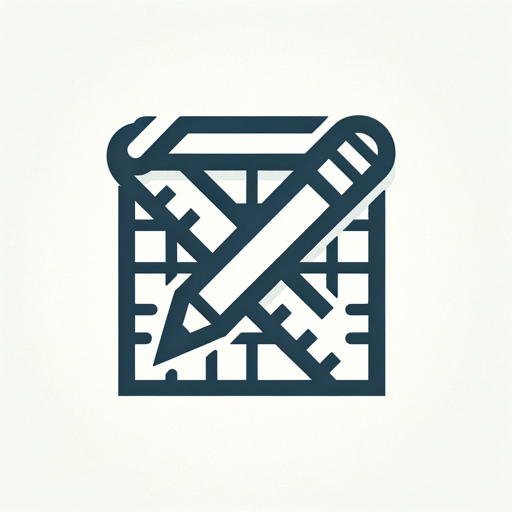Domain Driven Design Architect-Domain Driven Design Tool
AI-powered Domain Driven Design Solution
Explain how to implement DDD.
Describe Hexagonal Architecture with testability.
How does UseCase Driven Design integrate with DDD?
Critique this architecture approach.
Related Tools
Load More
Software Architect GPT
Builds new software architecture documents by understanding user requirements and design constraints

Solution Architect
Formal, thorough, and friendly architect for solutions and ADRs.

DFD Assistant
Provides PlantUML code for Data Flow Diagrams.

DBT Architect
Professional dbt expert for precise guidance.

Enterprise Architect Advisor
Expert in enterprise architecture, guiding in TOGAF and ArchiMate.
Software Architect
Expert in software architecture, aiding in diagram creation and design advice.
20.0 / 5 (200 votes)
Introduction to Domain Driven Design Architect
Domain Driven Design Architect (DDDA) is a specialized approach focused on applying Domain-Driven Design (DDD) principles to software architecture. It integrates Hexagonal Architecture and UseCase Driven Design, ensuring that the solutions are testable, maintainable, and align closely with business requirements. DDDA emphasizes the importance of understanding the business domain and creating a ubiquitous language shared between developers and domain experts. By modeling software around the core domain and its subdomains, DDDA aims to tackle complexity and foster innovation in software projects. For example, consider a healthcare system where patient data and treatment plans are central. Using DDDA, the core domain would involve patient records, medical history, and treatment management. Subdomains might include scheduling, billing, and insurance claims. The architecture ensures that each bounded context, such as patient management, operates independently but integrates seamlessly with others, allowing for scalable and maintainable software development.

Main Functions of Domain Driven Design Architect
Bounded Contexts
Example
In a retail application, separate bounded contexts might include Inventory Management, Order Processing, and Customer Support.
Scenario
By defining clear boundaries, each context can evolve independently, reducing the risk of changes in one area affecting others. This separation aids in maintaining clean code and aligning technical solutions with business needs.
Ubiquitous Language
Example
In a financial system, terms like 'Account', 'Transaction', and 'Balance' are used consistently across the team.
Scenario
Ensuring all stakeholders use the same terminology helps prevent misunderstandings and misalignments. This shared language is crucial for accurate communication and effective collaboration between developers and domain experts.
Aggregates and Entities
Example
In an e-commerce platform, an Order aggregate might consist of Order Items, Shipping Details, and Payment Information.
Scenario
Aggregates ensure consistency within transactional boundaries. By treating related entities as a single unit, the system can enforce business rules and invariants, enhancing data integrity and domain logic encapsulation.
Ideal Users of Domain Driven Design Architect Services
Enterprise Architects
Enterprise architects benefit from DDDA by gaining a structured approach to managing complex systems. The emphasis on clear boundaries and integration points allows architects to design scalable and maintainable solutions that align with business strategies.
Development Teams
Development teams use DDDA to enhance collaboration with business stakeholders. By adopting a ubiquitous language and focusing on core domains, teams can ensure that the software they develop truly addresses business needs and adapts to changing requirements.

How to Use Domain Driven Design Architect
Visit aichatonline.org for a free trial without login, no need for ChatGPT Plus.
Start by accessing the official website to begin your experience with Domain Driven Design Architect. This step allows you to explore the tool's features without any initial commitment.
Familiarize Yourself with Basic Concepts
Before diving in, ensure you have a foundational understanding of Domain Driven Design and Hexagonal Architecture. This will help you make the most out of the tool.
Set Up Your Project
Initialize a new project within the Domain Driven Design Architect. Define your domain models, bounded contexts, and use cases clearly.
Utilize Built-in Templates and Tools
Leverage the tool’s built-in templates and automated tools to design, validate, and refine your domain models and architectures efficiently.
Iterate and Validate
Continuously iterate on your designs, using feedback and validation tools provided by Domain Driven Design Architect to ensure your models align with business requirements and technical constraints.
Try other advanced and practical GPTs
CDK
AI-powered cloud infrastructure tool

xueqiu_analysis_v0206
AI-powered stock sentiment analysis

Photo Revival GPT
Revive Your Photos with AI Power

Javafx master
AI-powered assistance for JavaFX coding.

better Llama3
AI-Powered Assistance for Every Task
Tidyverse R Programming Helper
AI-powered assistance for R Tidyverse coding.

Furina
Craft narratives with AI precision.

Calcio Saggio
Unlock the Power of AI for Football Betting

Delphi Code
AI-powered Delphi coding assistant

Legal eagle
AI-powered legal insights at your fingertips.

Atomic Habits
AI-powered habit formation and transformation.

Blay Code Comparator
AI-Powered Comparison for Code and Text

- Project Management
- Software Development
- Architecture
- Modeling
- Microservices
Detailed Q&A About Domain Driven Design Architect
What is Domain Driven Design Architect?
Domain Driven Design Architect is an advanced tool designed to facilitate the implementation of Domain Driven Design (DDD) and Hexagonal Architecture principles in software projects. It offers features like automated model validation, built-in templates, and integration tools to streamline the development process.
What are the prerequisites for using Domain Driven Design Architect?
A basic understanding of Domain Driven Design and Hexagonal Architecture is recommended. Familiarity with software development practices and modeling concepts will help you leverage the tool effectively.
Can I use Domain Driven Design Architect for microservices architecture?
Yes, Domain Driven Design Architect is well-suited for designing microservices architectures. It supports the creation and management of bounded contexts and ensures clear separation of concerns, which is essential for effective microservices design.
How does Domain Driven Design Architect support collaborative development?
The tool provides features for team collaboration, such as shared project spaces, real-time updates, and version control integration. This allows multiple team members to work on the same project simultaneously and maintain consistency.
What kind of support and resources are available for new users?
New users have access to comprehensive documentation, tutorials, and community forums. Additionally, the platform offers customer support and regular webinars to help users get started and troubleshoot any issues.